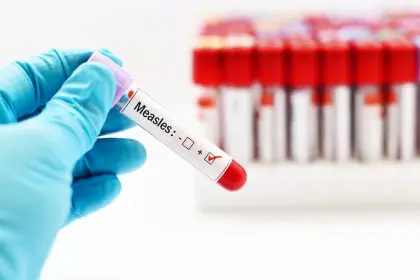Sugar hides in plain sight, tucked into cereals, snacks, and drinks that kids love. While it sweetens moments, its impact on young brains runs deep, quietly reshaping how children think, feel, and grow. Far beyond cavities, excessive sugar rewires developing minds, setting the stage for struggles that linger into adulthood. From breakfast bars to after-school treats, the modern diet bombards kids with more sweetness than their brains can handle. These five hidden harms reveal how sugar undermines young minds, turning innocent indulgences into threats that demand a closer look.
1. Foggy focus and slipping attention
Young brains need steady energy to learn and explore, but sugar delivers a rollercoaster that clouds focus. High-sugar foods like sodas or candy trigger rapid blood sugar spikes, giving kids a brief burst of alertness followed by a crash. This dip leaves them distracted, unable to concentrate on lessons or play. Over time, frequent spikes disrupt the brain’s ability to sustain attention, mimicking symptoms of inattention seen in other disorders. Classrooms become battlegrounds for wandering minds, as kids struggle to stay engaged after a sugary breakfast or snack, losing ground in critical early years.
2. Mood swings that unsettle emotions
Sugar doesn’t just jolt energy—it toys with emotions, sending young moods on wild swings. After a sweet treat, the brain floods with dopamine, sparking fleeting joy. But as sugar levels plummet, irritability and anxiety creep in, leaving kids prone to tantrums or sadness. Repeated cycles strain emotional regulation, especially in developing brains still learning to balance feelings. A child who seems happy one moment might spiral into frustration the next, with parents puzzled by the shift. These fluctuations chip away at resilience, making emotional stability harder to maintain in a world full of sugary temptations.
3. Memory gaps that hinder learning
Learning builds on memory, but sugar throws up roadblocks that stall progress. High sugar intake over weeks or months can impair the hippocampus, the brain region crucial for storing and recalling information. Kids who regularly consume sweetened drinks or processed snacks show slower recall in studies, struggling to retain math facts or story details. This isn’t just a bad day—it’s a pattern that compounds, widening gaps in school performance. The brain, starved of steady nutrients and overwhelmed by sugar’s chaos, misses chances to lock in knowledge, leaving young learners frustrated and behind.
4. Sleep disruptions that starve growth
A good night’s sleep knits together a child’s day, but sugar sabotages rest, starving developing brains. Sweet snacks or drinks, especially late in the day, rev up the nervous system, delaying bedtimes and fracturing sleep cycles. Kids toss and turn, missing deep sleep stages where the brain processes emotions and memories. Chronic poor sleep, fueled by sugar’s lingering buzz, dulls alertness and saps energy for learning or play. Over time, this deficit stunts cognitive growth, as tired brains struggle to keep up, turning nighttime treats into daytime troubles that parents might not suspect.
5. Addiction-like cravings that trap habits
Sugar hooks young brains with a pull that mimics addiction, rewiring reward systems to crave more. Each sweet bite lights up pleasure centers, training kids to seek sugary fixes for boredom or stress. Unlike adults, children lack the self-control to resist, so habits harden early, shaping lifelong patterns. These cravings override hunger cues, leading to overeating and weight gain that further stress the brain. A child reaching for cookies daily isn’t just indulging—it’s a brain caught in a loop, chasing highs that make healthy choices feel like punishment and set the stage for bigger health battles.
Why these harms matter
These five harms—foggy focus, mood swings, memory gaps, sleep loss, and cravings—show sugar’s quiet assault on young brains. Kids today consume far more sugar than past generations, with processed foods packing triple the sweetness of whole foods. Brains, still wiring connections through adolescence, are uniquely vulnerable, as sugar disrupts delicate growth phases. Poor focus and memory hobble school success, while mood swings and sleep issues strain families. Cravings lock in unhealthy diets, raising risks for obesity and diabetes, which hit kids harder in a world of endless treats.
The fallout spreads wide. Teachers wrestle with distracted classrooms, where sugar-fueled kids can’t sit still. Parents face emotional outbursts, unaware a snack might be the trigger. Healthcare systems brace for rising mental health issues, as sugar’s effects blur with other disorders. Society pays, too—struggling students grow into adults with weaker skills, draining economies. Sugar’s grip isn’t just personal—it’s a public health weight, pressing hardest on low-income areas where cheap, sugary foods dominate shelves, deepening divides in health and opportunity.
Steps toward healthier minds
Curbing sugar’s damage starts with practical shifts, though change isn’t instant. Swapping sugary cereals for oatmeal or fruit cuts morning spikes, steadying focus. Limiting sodas and juices, pushing water instead, eases mood swings over time. Snacks like nuts or veggies replace candy, supporting memory without crashes. Setting firm no-sugar rules after dinner protects sleep, letting brains recharge. Teaching kids to enjoy natural sweetness—berries, apples—weakens cravings, building habits that stick. These moves demand effort but shield young minds from sugar’s chaos, fostering clarity and calm.
Bigger fixes lie beyond families. Schools could ditch sugary vending machines, offering balanced lunches to level the playing field. Cities might tax sweetened drinks, funneling funds to nutrition programs. Food makers face pressure to cut hidden sugars, making healthy choices easier. Community gardens in urban spots give kids access to fresh produce, breaking reliance on processed junk. None of these erase sugar’s pull overnight, but they chip away, creating environments where young brains can thrive without invisible threats lurking in every bite.
Helping kids dodge the sugar trap
For now, families navigate sugar’s risks with care. Check labels for sneaky sugars—syrups, dextrose—hiding in “healthy” snacks. Cook simple meals at home, where you control ingredients, even if it’s just once a week. Keep treats out of sight, stocking fruit for quick grabs. Talk to kids about balance, not bans, to avoid rebellion later. Plan active days—parks, bikes—to burn energy naturally, not through sugar highs. These small steps don’t rewrite diets but tilt the odds, giving young brains room to grow strong in a world obsessed with sweet.
Sugar’s unseen damage—focus loss, mood chaos, memory slips, sleep theft, craving traps—hits young brains hard, turning treats into threats. Kids deserve better than a diet that dims their potential, but the fight starts with awareness. These five harms aren’t fate—they’re warnings, urging smarter choices in homes, schools, and cities. Until sugar loosens its grip, every mindful bite helps a child’s mind shine brighter, ready for a future unclouded by sweetness gone sour.

















